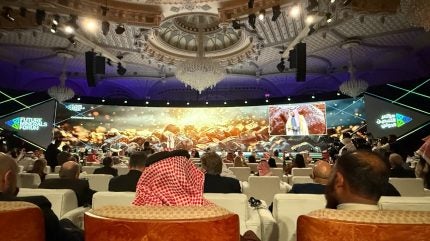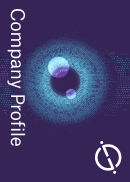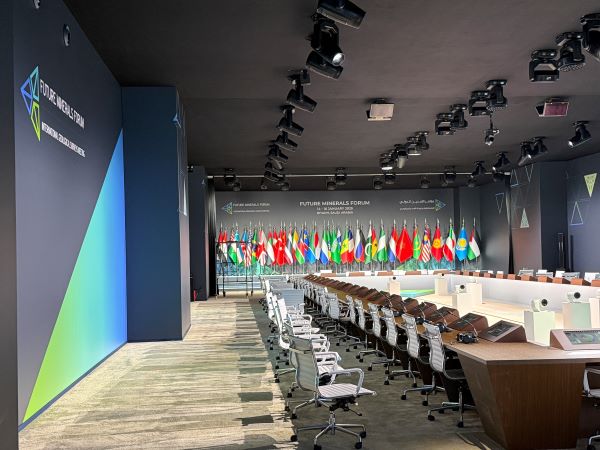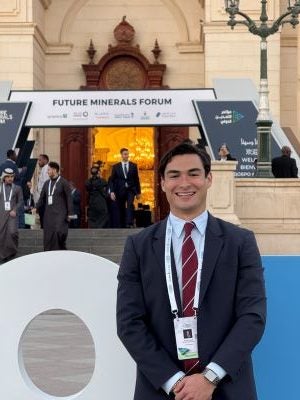
While the Future Minerals Forum (FMF) has for several years now been a cornerstone for mining industry leaders, the 2025 edition, dubbed the Year of Impact, took its significance to new heights.
The Forum was a testament to the convening power of the Kingdom of Saudi Arabia, its role as a development model for mineral-rich nations and its shrewd top-down approach for maximising the value of its domestic resources.
Featuring 11 CEOs from 20 of the world’s top mining companies and 89 ministries of mineral resources from across the world, FMF has arguably cemented itself as the ‘Davos of Mining’.
Saudi Arabia’s mining vision: domestic growth and foreign leadership
At the heart of this year’s FMF was a bold showcase of Saudi Arabia’s burgeoning mining capabilities, guided by Vision 2030, the kingdom’s road map for economic diversification.
Saudi Minister of Industry and Mineral Resources HE Bandar bin Ibrahim Alkhorayef emphasised the kingdom’s transformation, noting that “Saudi Arabia’s mining sector has become the fastest-growing globally, with a mineral potential now estimated at $2.5trn.”
Central to unlocking this estimated value is Ma’aden, Saudi Arabia’s state-owned mining enterprise, which announced at FMF 2025 a joint venture with Saudi Aramco to explore and develop critical minerals in-country.
Access the most comprehensive Company Profiles on the market, powered by GlobalData. Save hours of research. Gain competitive edge.

Your download email will arrive shortly
We are confident about the unique quality of our Company Profiles. However, we want you to make the most beneficial decision for your business, so we offer a free sample that you can download by submitting the below form
By GlobalData
A broader integration of the kingdom’s mature energy and young mining sectors is already under way, with companies such as Lithium Infinity developing direct lithium extraction technology capable of extracting battery-grade lithium from the harsh brine byproduct streams of oil and gas fields.
At the Aramco booth in the Link exhibition hall at FMF, other synergistic technologies were presented, such as the Saudi Aramco Geophysical Robot and Multi-Sensor Core Logger.
Worldwide, Saudi Arabia is deploying $15bn into projects targeting copper, lithium, nickel and iron ore, with a focus on emerging economies like Namibia, Guinea and the Democratic Republic of Congo (DRC).
The DRC in particular is courting Saudi investment. In an interview on the sidelines of FMF, a senior government official, Marcellin Paluku, expressed concern to Reuters that 80% of the country’s mines are partially Chinese owned. “You never know what can happen… So that means we are now trying to diversify our partnerships so we don’t rely on only one partner.”
Saudi Arabia might be an ideal partner because its investments explicitly aim to support infrastructure, logistics and industrialisation in resource-rich regions.
This was exemplified by Minister of Finance HE Mohammed bin Abdullah Al-Jadaan during the FMF Plenary session on Wednesday 15 January, where he illustrated the kingdom’s commitment to this model by reflecting on the announcement that Hadeed, Saudi’s largest steel producer, would invest more than $6bn (SR22.5bn) to meet the needs of major projects in the country.
Global market themes and controversies in the spotlight at FMF
Demand drivers underpinning Saudi investments in critical raw materials – such as data centres, aerospace and defence, power generation and transmission, and industrialisation – were echoed throughout the Strategic Conference, while the Ministerial Roundtable underscored the FMF’s focus on the super-region spanning Africa, western Asia and central Asia.
Saudi Arabia is seen as a strategic enabler because of its relative insensitivity to short-term price signals and holistic national development success, despite its economic dependence on natural resources. Moreover, with widespread debt distress and a forecasted one billion population increase in Africa by 2050, Saudi capital comes with valuable experience that many supplier nations are eager to emulate.
While there were several speakers from Chinese majors (such as the vice-chairmen of CMOC Group and Huayou Cobalt, and the president of Tianqi Lithium), the primary backdrop of the conference was collective interest in diversifying global supply chains away from Chinese dominance.

Gracelin Baskaran, director of the Critical Minerals Security Programme at the US Center for Strategic & International Studies (CSIS), asked the salient question in the FMF Impact Zone on day two: “To level the playing field, what do we need to do?”
Jeremy Weir, CEO of commodities trader Trafigura, called for government intervention to stabilise markets through long-term contracts, expedited permitting and price underwriting. He further emphasised that these actions would be good for midstream producers to attain price stability and good for customers in terms of market predictability.
However, major challenges remain upstream. As Mark Bristow, CEO of Barrick Gold, observed, the developed world’s focus on checkbox environmental, social and governance criteria has often sidelined emerging economies, depriving them of industrialisation opportunities. This sentiment sparked robust debate about the balance between sustainability and the urgent need for resource development, as Bristow was directly asked about the Loulo-Gounkoto mine seizure and the warrant for his arrest in Mali.
Innovation insights at the FMF
Meanwhile, start-ups in the Newlab pavilion at FMF demonstrated a variety of potentially game-changing technologies.
Membrane technology was particularly prominent, as three companies (SiTration, Membrion, and Sunchem) showcased their ideas in this space.
For example, SiTration “deploys silicon nanofiltration and electro-extraction modules to recover metals including copper, cobalt, gold and PGMs [platinum group metals] from even the most dilute and complex mining streams”, said Sarah Melvin, VP of strategy and operations.
Additionally, Robert Friedland’s I-Pulse and Typhoon technologies were subject of major excitement, especially among the large cohort of Saudi mining engineering students present.
Many of these students came from the prestigious King AbdulAziz University in Jeddah, led by the mining engineering department chair, Haitham Magdi Ahmed Eissa, and were seeking employment opportunities at mining companies in the kingdom, such as Ma’aden-Barrick and Ivanhoe Electric.
As emphasised by Minister HE Bandar bin Ibrahim Alkhorayef in his final remarks, technology, geology and talent development are seen as the primary themes towards becoming the “Silicon Valley of mining”.
Looking ahead
The 2025 FMF set a high bar for future events. By bridging the gap between innovation and implementation, Saudi Arabia is not only reshaping its own mining sector but also offering a blueprint for resource-rich nations worldwide.
As FMF continues to grow, it promises to be the focal point for mining’s most critical conversations. The next Forum will undoubtedly build on this momentum, ensuring that the mining world continues to converge in Riyadh for years to come.

About the author: Robert Fetell is a civil engineering graduate student at the Massachusetts Institute of Technology (MIT), supervised by Prof. Andrew J. Whittle, where his research focuses on integrating key technologies for monitoring the safety and stability of mine tailings storage facilities.
Fetell was also the lead organiser of the MIT Global Summit on Mine Tailings Innovation sponsored by ICMM, which brought together more than 150 in-person delegates.



